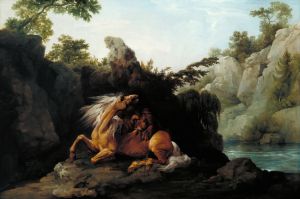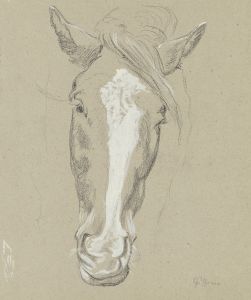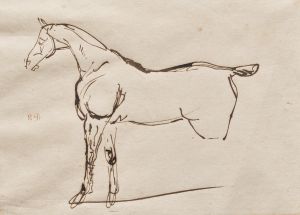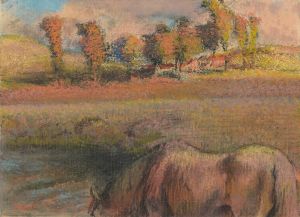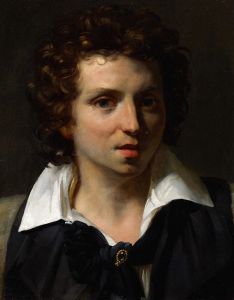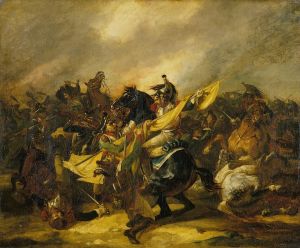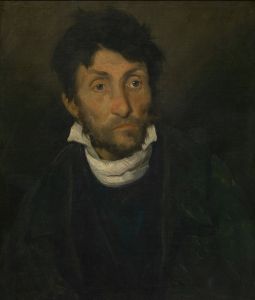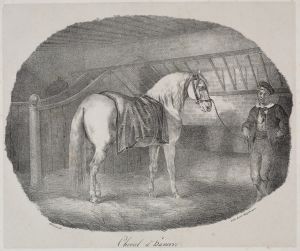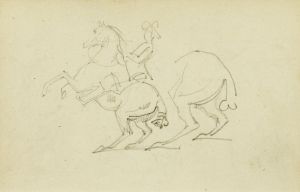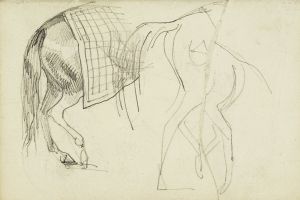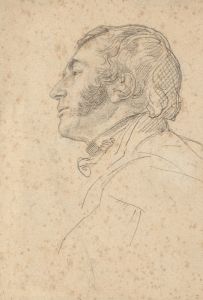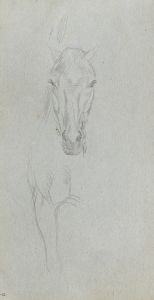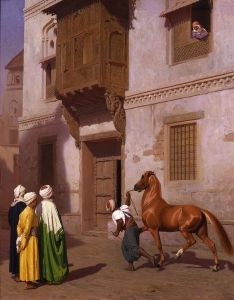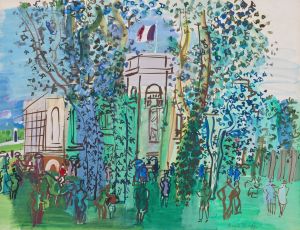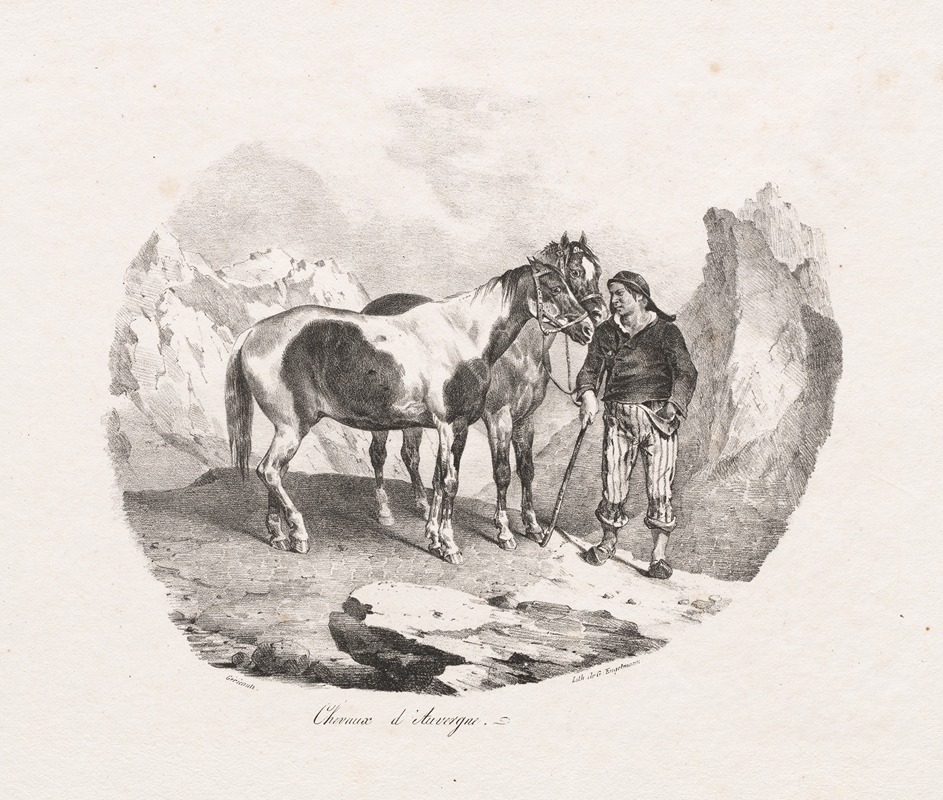
Chevaux d’ Auvergne
A hand-painted replica of Théodore Géricault’s masterpiece Chevaux d’ Auvergne, meticulously crafted by professional artists to capture the true essence of the original. Each piece is created with museum-quality canvas and rare mineral pigments, carefully painted by experienced artists with delicate brushstrokes and rich, layered colors to perfectly recreate the texture of the original artwork. Unlike machine-printed reproductions, this hand-painted version brings the painting to life, infused with the artist’s emotions and skill in every stroke. Whether for personal collection or home decoration, it instantly elevates the artistic atmosphere of any space.
Théodore Géricault, a prominent French painter and lithographer, is best known for his influential works in the Romantic movement. Among his notable works is "Chevaux d’Auvergne," which translates to "Horses of Auvergne." This painting reflects Géricault's profound interest in equine subjects, a theme that recurs throughout his artistic career.
Géricault was born on September 26, 1791, in Rouen, France, and he developed an early interest in art. He studied under renowned artists such as Pierre-Narcisse Guérin and was influenced by the works of Peter Paul Rubens and the Baroque style. Géricault's fascination with horses can be traced back to his early years, as he frequently visited the stables and racetracks, observing and sketching horses in various states of motion and rest.
"Chevaux d’Auvergne" is a testament to Géricault's skill in capturing the dynamic and powerful nature of horses. The painting is characterized by its realistic depiction of the animals, showcasing Géricault's keen eye for detail and anatomy. His ability to convey the musculature and movement of horses set him apart from many of his contemporaries. This work, like many of his equine studies, demonstrates his dedication to portraying the vitality and spirit of these creatures.
Géricault's approach to painting horses was not merely about capturing their physical form but also about expressing their energy and the emotional connection between humans and animals. This is evident in the way he rendered the horses' expressions and postures, imbuing them with a sense of life and character. His equine paintings often evoke a sense of admiration and respect for the animals, highlighting their strength and grace.
The region of Auvergne, known for its rugged landscapes and rural traditions, provided a fitting backdrop for Géricault's exploration of equine themes. The horses of Auvergne were renowned for their endurance and resilience, qualities that Géricault sought to capture in his work. By focusing on these regional horses, Géricault not only paid homage to their unique characteristics but also celebrated the cultural heritage of the area.
Géricault's equine paintings, including "Chevaux d’Auvergne," played a significant role in the development of animal painting as a respected genre in the 19th century. His works influenced subsequent artists who sought to depict animals with the same level of realism and emotional depth. Géricault's legacy in the art world is marked by his ability to transcend traditional boundaries and bring a fresh perspective to the subjects he portrayed.
While "Chevaux d’Auvergne" may not be as widely recognized as some of Géricault's other masterpieces, such as "The Raft of the Medusa," it remains an important part of his oeuvre. It exemplifies his mastery of form and movement, as well as his enduring passion for the natural world. Through this painting, Géricault continues to inspire artists and art enthusiasts alike, reminding us of the timeless beauty and power of the horse.





